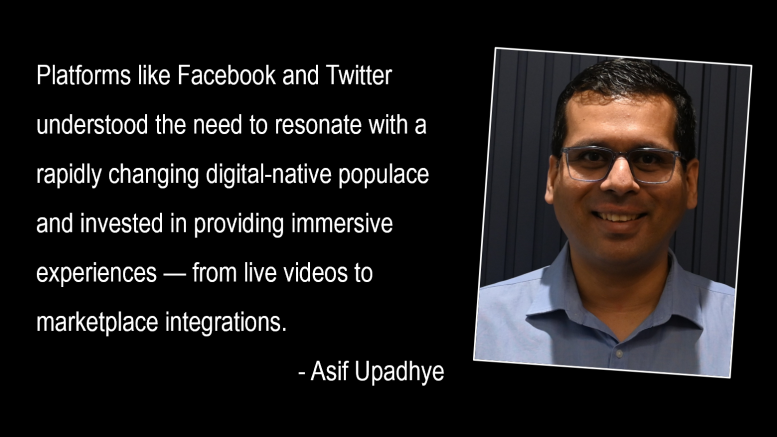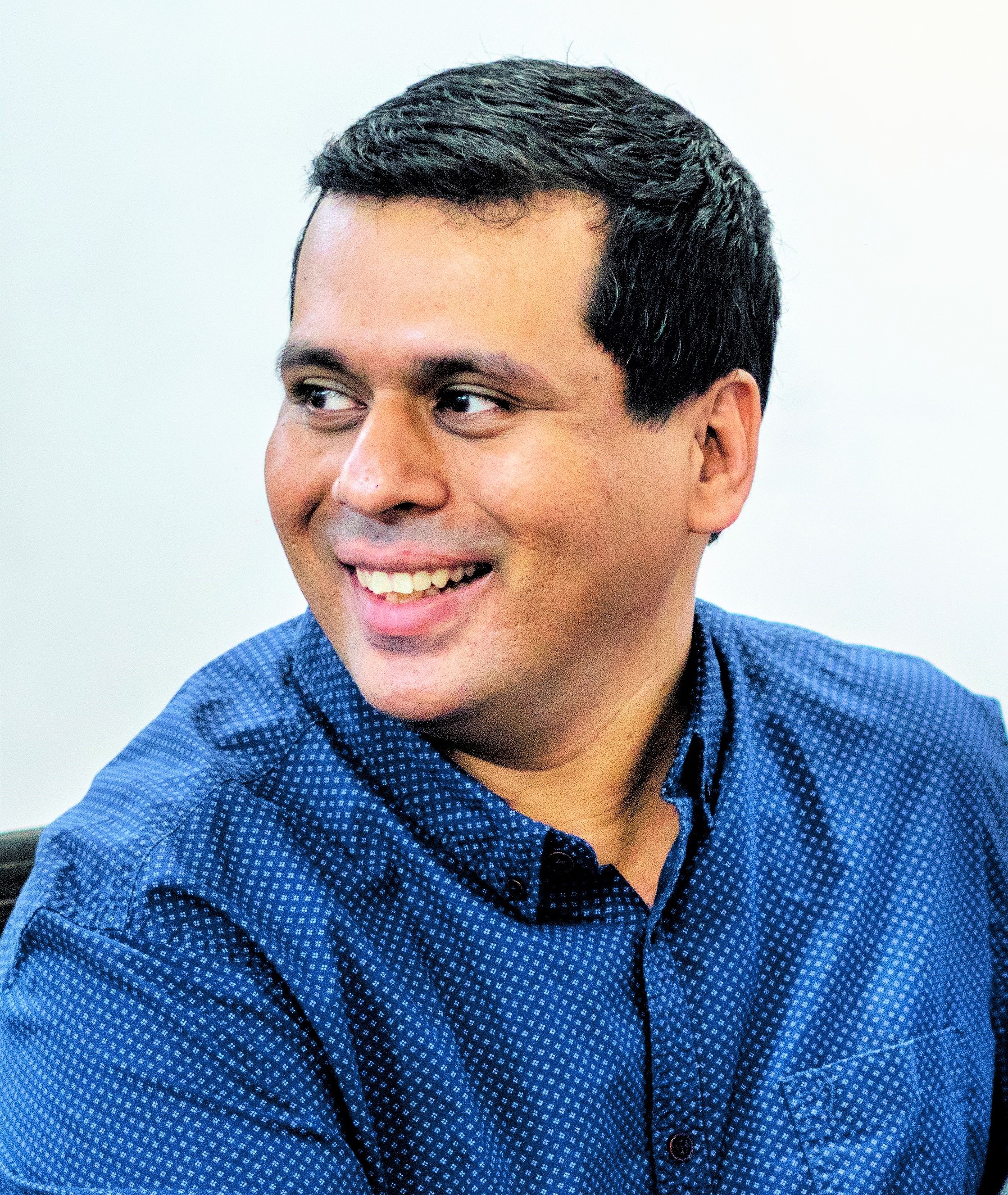Social media was once a novel way to connect with friends and family, and is now a crucial business tool, central to creating brand narratives and engaging with consumers. Research shows that the average social media user engages with an average of 6.6 various social media platforms.
This speaks volumes about the evolving nature of online interaction and the desire for multifaceted digital experiences.
How?
The ‘how’ of this evolution is evident in its numerous upgrades. Platforms once solely dedicated to personal updates have now integrated live-streaming, augmented reality, and even e-commerce gateways. Take Instagram, for instance. Once a humble photo-sharing app, it has seamlessly woven shopping features into its interface, transforming passive scrolling into potential shopping sprees. Then there’s TikTok, revolutionising short-video content and driving brands to rethink their advertising strategies, prioritising bite-sized yet impactful messages.
Why?
The ‘why’ is rooted in the inexorable drive of platforms to stay relevant.User behavior and preferences are akin to moving targets. Platforms that were yesterday’s rage can quickly become today’s relics if they fail to innovate or resonate. One of the most poignant examples that highlight this is the rise and fall of MySpace. During the mid-2000s, MySpace was the epitome of social networking. It allowed users to customise their profiles, connect with friends, share music, and discover new bands. It was revolutionary in its ability to give a personalised digital space for its users. Yet, as the digital age progressed, MySpace found itself in the shadows of newcomers like Facebook and Twitter.
What happened? Facebook, for instance, introduced a cleaner interface, and more structured user experience, and continually updated its features to offer enhanced connectivity, like its ‘News Feed’, which became a game-changer in how users consume content. Facebook managed to tap into an ever-growing demand for seamless, interconnected digital experiences. The platform evolved with its audience, understanding the necessity of mobile integration early on and diving deep into curated content.
On the other hand, MySpace lagged in innovation and adaptability. Its strength — the customisable profiles — became its weakness, leading to a cluttered interface. As the boundary between the digital and real-world became increasingly thin, users sought platforms that mirrored real-world simplicity and efficiency. Platforms like Facebook and Twitter understood the need to resonate with a rapidly changing digital-native populace and invested in providing immersive experiences — from live videos to marketplace integrations.
MySpace’s decline is a cautionary tale that underlines the importance of continual evolution, relevance, and the delicate balance of staying true to one’s core offering while being malleable enough to adapt to the changing digital landscape.
What’s the trick to mastering this terrain?
While today’s social media landscape is exciting, navigating it is no easy task. And if brand custodians really want to keep up with the challenges, they need to augment their research efforts and invest in tools and technologies that can capture and analyse social media data. Harnessing the power of AI and machine learning can enable us to sift through millions of posts, tweets, and comments, providing real-time insights into customer sentiment, preferences, and behavior. But let’s not forget about our teams! It’s one thing to understand the landscape, but quite another to communicate effectively within it. Training our teams to do exactly this is another critical step. Each platform, be it Facebook, Instagram, Twitter, LinkedIn, TikTok, or any other, comes with its unique language and rules. Mastering these nuances is vital to crafting messages that resonate with specific audiences. However, this challenge is further complicated by the asynchronous evolution of these platforms. For instance, while Instagram may be encouraging the use of hashtags to increase post visibility, TikTok might emphasise video content without focusing on hashtag utilisation. Meanwhile, LinkedIn, as a professional network, has entirely different engagement criteria, emphasising industry insights and thought leadership.
Facebook’s algorithm may favor community engagement and meaningful interaction, while Twitter’s fast-paced environment might require concise and timely posts. The rules aren’t just different; they’re continually changing, with platforms often altering algorithms and engagement strategies. This constant change means that the platform’s guidelines only offer a glimpse into effective engagement. Information and ‘rules’ about social media use can seem fuzzy and are often altered too quickly. Brands must be agile, learning and re-learning the dynamics of each platform.
For example, a brand might have to evolve its strategy from text-based posts on Facebook to more visual content on Instagram, and then adapt again for TikTok’s video-centric audience. Similarly, while hashtag campaigns might thrive on Twitter, they could fall flat on LinkedIn, where professional insights and long-form content might be more appreciated.
Success in this environment demands more than mere technical proficiency; it requires a blend of art and science, intuition, and analysis. Teams must be trained not just to follow the guidelines but to interpret subtle changes, predict trends, and innovate.
More importantly, they should be equipped to respond in real-time, humanising the brand and cultivating relationships based on trust and respect.
The social media landscape is in constant flux, and what works today may not work tomorrow.
In an era marked by unprecedented information and connectivity, the importance of understanding and leveraging people’s opinions, thoughts, and feedback has never been greater. These raw, unfiltered insights have the potential to redefine brand strategies. With 4.48 billion social media users constituting almost 57% of the global population, the scope and scale of this engagement are nothing short of transformative.
What makes this era particularly exciting isn’t merely social media as a platform, but the pace and nature of its evolution. The constant emergence of new technologies, algorithms, engagement strategies, and user behaviors creates a landscape that’s always fresh and challenging. Whether it’s the rise of live-streaming, innovative influencer collaborations, integration with e-commerce, or immersive experiences through augmented reality, social media continually presents uncharted territories to explore.
However, navigating this complex terrain calls for more than mere adaptation. It demands introspection. As marketers, brand managers, or entrepreneurs, we must continually ask ourselves: Are we truly understanding our audience’s needs and preferences? Are we engaging or merely broadcasting? Are we innovators or followers? Are we building relationships or chasing metrics?
Embracing the ever-changing world of social media is not about merely staying up-to-date with the latest trends. It’s about being thought leaders, trendsetters, and most importantly, authentic human connectors. The future belongs to those who don’t just see social media as a tool but as a dynamic, ever-evolving ecosystem where brands and audiences meet, engage, and grow together. It’s a thrilling challenge, a profound opportunity, and a journey that’s only just beginning.
The views and opinions published here belong to the author and do not necessarily reflect the views and opinions of the publisher.




Be the first to comment on "Play Along Cause Social Media is Upgrading"